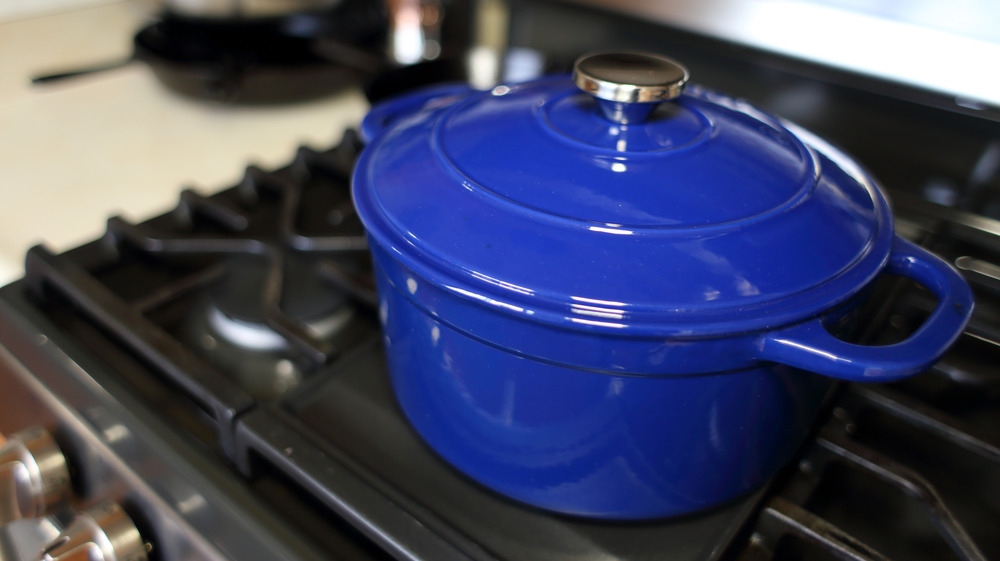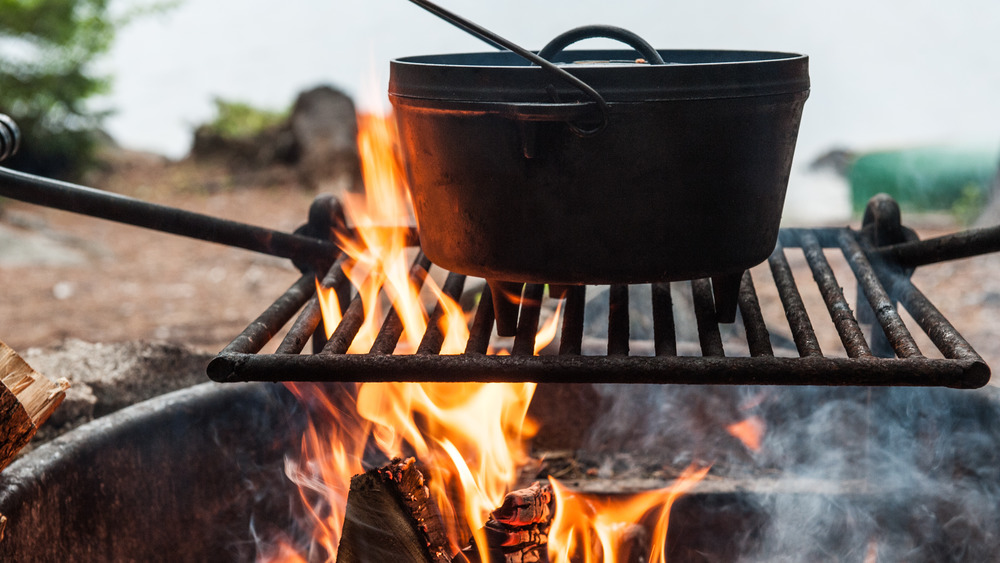The Biggest Mistake You're Making With Your Dutch Oven
Dutch ovens are extremely versatile and one of the greatest pieces of culinary equipment to have in your cooking arsenal. You would be hard-pressed to find someone who didn't sing this cast iron pot's praises. Per Taste of Home, you can cook practically anything in a Dutch oven with great ease and consistency: soups, braised ribs, chicken and dumplings, mac and cheese, desserts, and more.
Part of the Dutch oven's magic stems from how it is made. Eater explains that these heavy, enamel-coated cast iron pots were initially constructed to use over an open fire. Their tight-fitting lids help trap in both heat and steam, making a Dutch oven the perfect environment to achieve succulent meats and crusty loaves of bread (via Today). Even famed cooks Julia Child and Nigella Lawson are fans of this kitchen necessity, per Eater.
Dutch ovens can be a real asset on your cooking and gastronomic journey. However, these pots are also quite expensive. According to Eater, you can expect to fork out around $350 for a small version of this essential kitchen tool, while a larger version could run you over $500. That's a lot of Benjamin Franklins! That's why it is important to avoid making one of the biggest and most common mistakes when using your precious Dutch oven.
Avoid high temperatures when using a Dutch oven
High temperatures are the enemy when it comes to your Dutch oven and the fabulous food you are cooking up, The Kitchn reveals. Unless you are a fan of food that's burnt, caked-on, or stuck to your beautiful enameled cast iron, then you want to follow the slow and low philosophy, even if you are frying or searing.
This guideline may go against what most of us are accustomed to. But, according to Le Creuset, one of the preeminent Dutch oven manufacturers, you want to let your pot heat up "gradually" using a low to medium setting. The cookware experts at Le Creuset go on to explain that once your pot is heated, you can dial it down to a low setting and your food will cook to perfection. The site notes that you want to save those high heat settings for boiling water for pasta or reducing your sauces and stocks.
On the flip side, you also want to avoid extreme cold temperatures when you are working with your Dutch oven. The Kitchn points out that this cookware doesn't just have the ability to hold heat, it can also keep things cold. However, if you move your Dutch oven from the stove to the refrigerator before it has had time to cool, you risk cracking its enamel.

